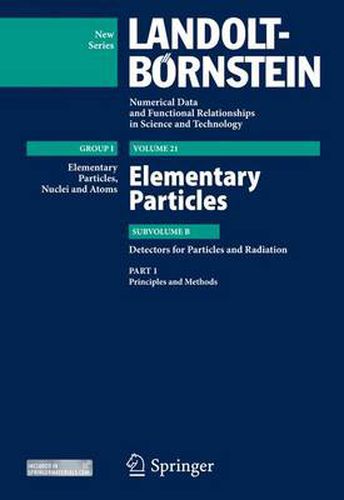Readings Newsletter
Become a Readings Member to make your shopping experience even easier.
Sign in or sign up for free!
You’re not far away from qualifying for FREE standard shipping within Australia
You’ve qualified for FREE standard shipping within Australia
The cart is loading…






Competent experts provide a summary of the enormous progress achieved in the development of new detection methods of charged and neutral particles, and photons. These achievements were initiated by the advent of new particle colliders, e.g., the LHC at CERN, but also by non-accelerator experiments. Part 1 of Subvolume B reviews the interaction of particle radiation with matter, and describes particle detectors, like, e.g., scintillation, gaseous, solid state, time-of-flight, Cerenkov, transition radiation, and neutrino detectors. Calorimetry and nuclear emulsions are considered as well. Finally, signal processing for particle detectors, data treatment and analysis methods (including detector simulation, high-level data selection, pattern recognition, distributed computing, and statistical issues) are addressed.
$9.00 standard shipping within Australia
FREE standard shipping within Australia for orders over $100.00
Express & International shipping calculated at checkout
Competent experts provide a summary of the enormous progress achieved in the development of new detection methods of charged and neutral particles, and photons. These achievements were initiated by the advent of new particle colliders, e.g., the LHC at CERN, but also by non-accelerator experiments. Part 1 of Subvolume B reviews the interaction of particle radiation with matter, and describes particle detectors, like, e.g., scintillation, gaseous, solid state, time-of-flight, Cerenkov, transition radiation, and neutrino detectors. Calorimetry and nuclear emulsions are considered as well. Finally, signal processing for particle detectors, data treatment and analysis methods (including detector simulation, high-level data selection, pattern recognition, distributed computing, and statistical issues) are addressed.